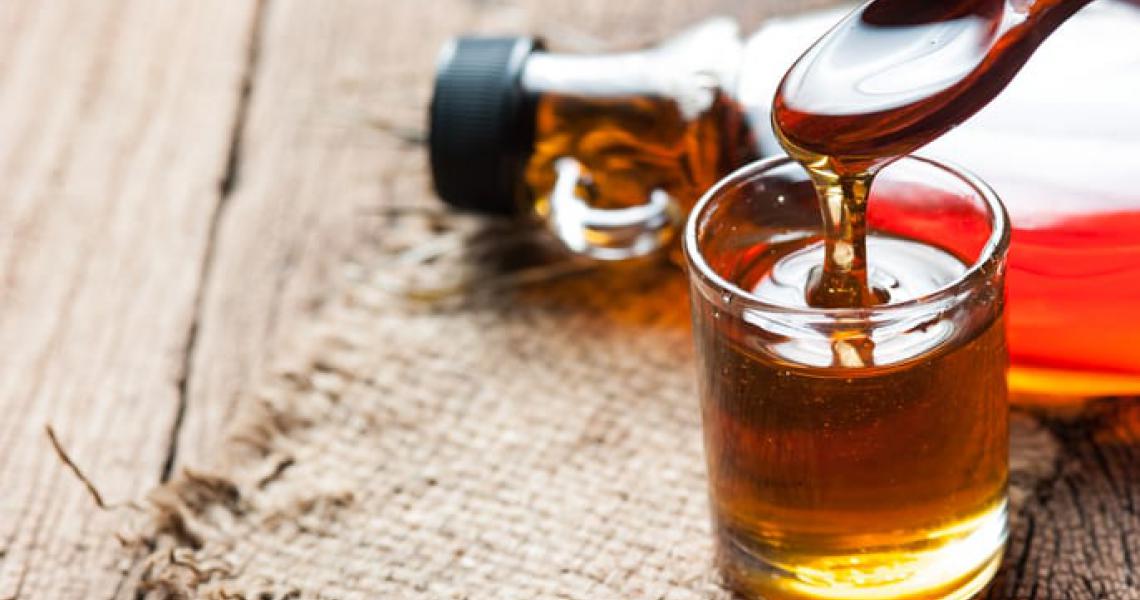From a Registered Dietitian: How to Enjoy Maple Syrup

As the days grow brighter and warmer, sugar makers are hard at work on this month’s harvest: maple syrup.
Maple sap starts running when daytime temperatures are between 40-45 degrees and fall below freezing overnight. This mobilizes energy and nutrients stored by the tree during the previous summer. Once collected, sap is concentrated into syrup. It takes 40 gallons of sap to produce one gallon of syrup.
From Sap to Syrup
Sap is concentrated by a variety of methods: freezing, boiling, or reverse osmosis, to a final end product that is 66 percent sugar.
Vermont maple syrup is available four color profiles, previously known as grades. The lightest color and flavor syrup, “Golden Color with Delicate Flavor” (previously known as Fancy), is made from the sap at the beginning of the season. As the season progresses, the syrup produced darkens in color and intensifies in flavor, ending with syrup of “Very Dark Color and Strong Flavor” (previously Grade B).
Maple Syrup: Nutrition Profile
While maple syrup is 66 percent sugars, what sets it apart from refined sugar is its complex flavors, as well as some nutrients, such as minerals and antioxidants.
Maple syrup provides a decent amount of the minerals manganese and zinc. The darkest syrups may have more than 20 different types of antioxidants. Because maple syrup is essentially a sugar syrup, incorporate it into your diet judiciously. The best way to get minerals and antioxidants is to eat a wide variety of whole foods.
Watch your sugar intake!
On average, Americans eat more than enough added sugar.
The American Heart Association recommends that added sugars be limited to 9 teaspoons (35 grams) for men, and 6 teaspoons (25 grams) for women and children.
Maple syrup should be counted into this daily allotment for added sugars, as the small amount of nutrients provided in maple syrup is not reason enough to include more. Rather, swap maple syrup for regular sugar in the foods that you eat. You may find you can use less maple syrup than you do sugar, as the syrup offers a more complex flavor profile. Try a drizzle in plain yogurt or oatmeal, or in your coffee if you typically use sweetener.
Recipe: Maple Ginger Balsamic Dressing
In this month’s recipe, Maple Ginger Balsamic Dressing, the maple syrup provides a bit sweetness to balance the flavors in the balsamic vinegar. One tablespoon of this dressing has 7 grams of sugars for your daily total.
This month, you can visit many of the maple producers across the state: Vermont Maple Open House Weekend is March 23 and 24. Get a firsthand look at how maple is made and enjoy many of the special, sweet treats made from maple.
Maple Ginger Balsamic Dressing
- 1cupmaple syrup
- 1 1/2cupsbalsamic vinegar
- 1/4cupginger puree
- 1/4cupDijon mustard
- 1cupolive oil
- Place maple syrup, balsamic vinegar, ginger puree and Dijon mustard into a blender. Pulse to combine.
- Slowly add olive oil in a steady stream to the mixture with the blender running.
- Store in the refrigerator for up to 30 days.
Cathy McIsaac, RD, is a registered dietitian at The University of Vermont Medical Center.






